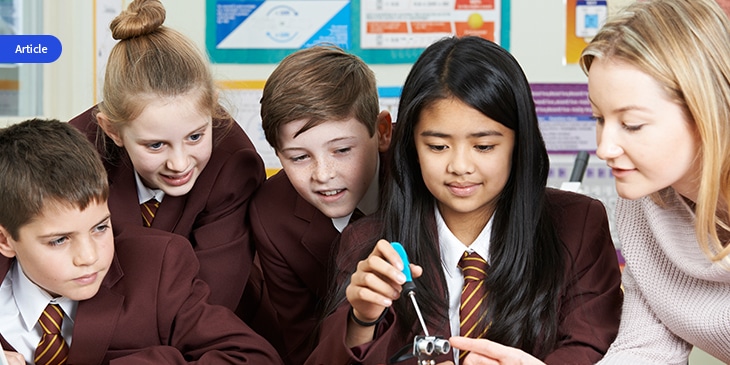How do you prepare students for careers that don’t yet exist? The short answer: Technology. However, hard skills and tangible tools don’t tell the whole story. Soft skills also play a leading role in student success. In fact, the more digital the world becomes, the more important the interpersonal.
This research-based look at classroom evolution follows where the most effectual shifts are happening – and how students are benefitting.
VR, AR, and AI are on the rise
Innovative classrooms produce innovative learners. The most evolved educational spaces are embracing emerging innovations such as Artificial Intelligence (AI), Virtual Reality (VR) and Augmented Reality (AR).
The desired outcomes are multifold.
AI tools are already being used to lighten the administrative workloads of teachers. Voice-enabled AI, a technology 70% of UK children between age 8 to 17 already use, are capable of taking attendance and tracking class participation. This allows educators to concentrate on the more personal and creative aspects of classroom management.
Highlighting a recent report into the use of AI in UK education, The Guardian summarised how different AI tools are being used, “Some are aimed at tailoring a personalised educational experience for learners, while others ease teachers’ workloads through tools such as automated marking. Others help managers make decisions, including tools that analyse data across multiple universities to predict which are likely to perform less well in inspections.”
Immersive technologies like VR and AR also hold promise in the classroom, especially for students with learning differences like ADD and ADHD. Though its adoption is somewhat new, research already shows that using AR in educational settings improves learning performance and encourages learning motivation. 2022 could be the year it really takes hold as it’s predicted that some 2 billion mobile AR users worldwide will use the technology on a monthly basis.
Digital responsibility will play a large role
As classroom technology increases, so does the need for safety. Given that people under 18 account for an estimated one in three Internet users globally, and UK children aged between 5‐16 years spend an average total of 6.3 hours of screen time per day, it’s no wonder protecting their identities and psyches are top of mind.
Schools are feeling the pressure to teach students what it means to have healthy, responsible and boundaried interactions with the technologies they use in and outside the classroom.
The aim is to equip them with the tools they need to manage online risk and use technologies with built-in protections to keep them safe.
Soft skills are important too
No matter how evolved technology becomes, students will still need well-developed interpersonal skills to succeed in school and the workforce. It’s even estimated that by 2030 5.8 million people in the UK will be underskilled when it comes to interpersonal skills and empathy.
In fact, 91% of global CEOs agree, saying soft skills that support digital competencies are what they most need to strengthen in their organisations.
“Learning virtues and values such as empathy and kindness, and developing emotional intelligence are equally as important as the math and science lessons that we teach, in order for children to understand themselves, their connection to others and to the world,” shares Independent International Educational Consultant and whole child advocate, Nastaran Jafari.
Student-led learning will shine
Social media is a prime example of how one person can start a group and build it up by providing
When students have agency in their education, it sets them up to make a smoother transition from the school day to the work day.
In a move that essentially turns the traditional teacher-student model on its head, student-centred learning shifts the power and sets the two up as equals. By giving students a say in aspects like curriculum content or how the school day is structured, it helps them get in touch with their own innate voice and prepares them to be active participants in their future.
What students learn now will support them through the rest of their lives and careers. A static education is a huge disservice. By staying attuned to changes in the world and the workforce, educators can provide the holistic mix of skills and know-how needed to nurture our future.




